Discover the ins and outs of data science and its impact. Explore the significance and relevance of this dynamic field shaping the future.

Data science is a multidisciplinary field that employs various techniques, tools, and algorithms to analyze and interpret data, leading to informed decision-making.
It seamlessly blends principles from statistics, computer science, and specific domain knowledge to derive meaningful insights from both structured and unstructured data. The evolution of this field has been accelerated by the exponential growth of data generated across numerous sectors, making it vital for organizations to harness these insights effectively.
The core components of data science include data collection, data cleaning, data analysis, and data visualization. Data collection involves gathering information from various sources, which can range from databases and logs to external APIs and sensors. Once collected, the data must be cleaned and processed to eliminate errors and inconsistencies that could skew analysis results. In the data analysis phase, data scientists apply statistical and computational techniques to explore relationships, detect patterns, and establish models that can predict outcomes. The final step of data visualization plays a crucial role in communicating findings, allowing stakeholders to grasp complex insights through interpretable visual representations.
The interdisciplinary nature of data science facilitates its application across multiple sectors. In healthcare, data science is pivotal in predictive modeling and personalized medicine, allowing for improved patient care and outcomes. In the finance sector, organizations leverage analytics for risk assessment, fraud detection, and market predictions. Marketing teams utilize data science to optimize campaigns, analyze customer behavior, and enhance targeting strategies. These applications underline the significance of data science in today’s data-driven world, highlighting its role as a cornerstone for innovation and strategic decision-making across various industries.
Big data refers to the vast volumes of data generated at an unprecedented velocity from a multitude of sources. Its significance lies in its ability to provide valuable insights that drive decision-making in various domains. The concept of big data can be encapsulated through the ‘three Vs’—volume, velocity, and variety. Volume relates to the immense amount of data being produced, often reaching petabytes and beyond. Velocity addresses the speed at which this data is generated and processed; real-time analytics capabilities enable organizations to respond promptly to changing conditions. Variety reflects the diverse formats of data, which can include structured databases, unstructured text, images, or streaming data from the Internet of Things (IoT).
In the realm of data science, big data serves as the backbone for sophisticated analytics and machine learning initiatives. By harnessing big data, data scientists can identify patterns, uncover correlations, and derive actionable predictions, which ultimately enables organizations to enhance their strategies and improve performance. Successful data science projects rely heavily on the effective management and analysis of these extensive datasets, making big data a crucial element in the decision-making process.
However, utilizing big data also introduces numerous challenges. Organizations face hurdles in terms of storage, processing capabilities, and the intricacies involved in ensuring data quality and security. Advanced tools and technologies, such as distributed computing frameworks and machine learning algorithms, are necessary to tackle these complexities. Moreover, without sound governance and clear analytical strategies, organizations may struggle to extract meaningful insights from their data. This underscores the necessity of establishing robust data management practices to maximize the potential of big data in data science applications.

Machine learning stands as a pivotal component of the broader field of data science, facilitating the extraction of insights from vast datasets. At its core, machine learning utilizes algorithms that allow computers to learn from data and make predictions or decisions without being explicitly programmed. This capability is especially crucial in an era where organizations are inundated with information, and the ability to discern patterns can lead to significant competitive advantages.
There are three primary types of machine learning: supervised, unsupervised, and reinforcement learning. Supervised learning involves training algorithms on labeled datasets, where the expected output is known. For instance, a retail company might use supervised learning to predict customer churn by analyzing historical data on customer behavior and the outcomes associated with their engagement. In this scenario, the algorithm learns to identify key factors that influence customer retention.
In contrast, unsupervised learning deals with unlabeled data, aiming to uncover hidden patterns or intrinsic structures. For example, a financial institution may apply unsupervised learning techniques to segment customers based on purchasing behaviors, enabling them to tailor marketing strategies accordingly. Clustering algorithms are commonly used in this context to identify customer profiles that, while not previously labeled, can inform business decisions.
Lastly, reinforcement learning focuses on training algorithms to make a sequence of decisions by rewarding desired actions and punishing undesired ones. This approach is often utilized in robotics and gaming, where machines learn optimal strategies through trial and error. A notable application is in autonomous vehicles, where reinforcement learning algorithms allow the vehicle to adapt to varied driving conditions and enhance safety through experiential learning.
Through these machine learning techniques, organizations can harness data science to foster informed decision-making, optimize operations, and drive innovation in their respective fields.
The realms of artificial intelligence (AI) and data science are intricately intertwined, with data science providing the foundational methods and techniques that fuel AI advancements. Data science encompasses the systematic extraction, transformation, and analysis of data to derive actionable insights. These insights are crucial for training AI models, which rely heavily on large datasets to learn and make predictions or decisions based on new information. The synergy between these two fields is evident in various applications across multiple domains.
One significant application of data science in AI is in the realm of machine learning. Techniques such as supervised and unsupervised learning utilize datasets to train algorithms, enabling systems to recognize patterns and improve over time. For instance, in image recognition applications, algorithms can be trained to identify objects by analyzing thousands of labeled images, showcasing the core principle of data science at work. Similarly, natural language processing (NLP), a subset of AI, leverages data-driven techniques to understand and generate human language, facilitating applications like chatbots and sentiment analysis tools.
Moreover, the integration of data science into AI has led to the emergence of predictive analytics, which plays a pivotal role in industries such as healthcare and finance. By analyzing historical data, organizations can forecast future trends, leading to better decision-making processes. With AI acting upon these predictions, companies are increasingly relying on automated systems to enhance service delivery and customer experience. Furthermore, the accessibility of advanced data science tools is opening new avenues for AI development, allowing businesses of varying sizes to harness analytics for innovation.
Looking forward, the future of AI in data science is poised for dynamic growth, characterized by the integration of advanced techniques such as deep learning and neural networks. These technologies will likely drive further significant innovations in AI capabilities, as they enable even deeper analysis of complex data structures. As the intersection of AI and data science continues to evolve, the potential for transformative applications across industries becomes increasingly evident.
Data analysis is a critical component of data science, providing methodologies that allow scientists to extract valuable insights from complex datasets. Among the essential techniques employed in this domain are statistical analysis, data mining, and predictive analytics. Each of these techniques serves a vital purpose and can significantly influence data-driven decision-making.
Statistical analysis encompasses a variety of methods used to summarize and interpret data. It involves the application of mathematical theories and formulas to comprehend trends, patterns, and relationships within datasets. By utilizing descriptive statistics, such as mean and standard deviation, analysts can develop a base understanding of data distribution, whereas inferential statistics allow conclusions to be drawn from a sample to a broader population. It is crucial that data scientists choose the appropriate statistical methods tailored to the nature of the data and the specific questions posed.
Data mining is another fundamental technique that involves discovering patterns and relationships in large datasets through methods such as clustering, classification, and association rule mining. Clustering can help segment data points into meaningful groupings, while classification involves assigning predefined labels to observations based on their features. This method is particularly useful in areas like customer segmentation and fraud detection, allowing businesses to tailor their strategies based on data insights.
Predictive analytics leverages statistical algorithms and machine learning techniques to forecast future trends based on historical data. By analyzing past patterns, data scientists can build models that provide insights into potential outcomes, effectively aiding in informed decision-making. For example, businesses can use predictive analytics to optimize inventory management or streamline marketing efforts. It is essential to select the right predictive model that best aligns with the specific context and characteristics of the data in question.
When faced with a particular problem, it is important to assess the strengths and limitations of each technique. Data professionals should consider the data quality, volume, and the specific objectives of their analysis, thus ensuring that the selected technique maximizes the potential for clear, actionable insights.

Data visualization plays a crucial role in the field of data science by enabling the effective communication of insights derived from data analysis. In an era where vast amounts of information are generated daily, the capability to visualize data allows stakeholders to comprehend complex datasets quickly and clearly. Visualization transforms raw data into graphical formats, making it more accessible and interpretable, which is particularly essential for informed decision-making in various domains such as business, healthcare, and research.
One of the primary benefits of data visualization is its ability to simplify intricate information and present it in a digestible manner. Through the use of charts, graphs, and other visual elements, trends and patterns that might be obscured in textual data can be highlighted. For instance, a well-designed bar graph can succinctly convey the performance of different products over time, making it easier for management to identify areas of growth and concern. This process of storytelling through data can engage audiences and provoke actionable insights.
To create effective data visualizations, various tools and techniques are available. Software such as Tableau, Power BI, and Google Data Studio are popular for their user-friendly interfaces that allow data scientists to create compelling visuals without extensive programming knowledge. Furthermore, leveraging libraries such as Matplotlib and Seaborn within Python can provide greater control over the visualization process, enabling customization to meet specific analytical needs.
When implementing data visualization, adhering to best practices is vital. This includes choosing the right type of visualization for the data at hand, utilizing color schemes thoughtfully, and ensuring that visual clutter is minimized. By focusing on clarity, relevance, and aesthetic appeal, data scientists can produce visual representations that not only inform but also resonate with their intended audiences.
Data science is an expansive and dynamic field, yet it is not without its challenges. One of the most prevalent issues encountered by data scientists is related to data quality. Inaccurate, incomplete, or inconsistent data can significantly undermine the results of any data analysis, leading to misguided insights. Ensuring that data is clean and properly formatted is essential for generating reliable conclusions. This often involves a labor-intensive process of data cleaning and validation, where data scientists must develop strategies to manage and rectify shortcomings in the datasets they work with.
Another notable challenge in data science involves ethical considerations. With the growing use of algorithms and machine learning models in decision-making processes, ethical implications surrounding data privacy and consent have come to the forefront. Data scientists must navigate the delicate balance between leveraging large datasets for insights while also respecting individual privacy rights and adhering to legal frameworks. Furthermore, biases present in the training data can lead to distorted outcomes, creating potentially harmful effects, especially in sensitive applications such as healthcare and criminal justice.
The difficulty of interpreting results also presents a formidable challenge. Data scientists can produce complex models yielding high accuracy, but translating these findings into actionable business strategies can be daunting. Communication barriers between data scientists and stakeholders may lead to misunderstandings of the model’s implications. Thus, enhancing data visualization techniques and encouraging cross-disciplinary collaboration are pivotal in clarifying the insights derived from data.
To address these challenges effectively, implementing robust data governance practices is paramount. This approach ensures not only the adherence to ethical standards and data quality but also supports continuous learning within the organization. Promoting a culture of innovation and openness to adapt can greatly enhance a data-driven organization’s capacity to overcome these obstacles and harness the true potential of data science.

Data science is poised for a transformative future as new technologies and methodologies emerge, driving significant changes across various industries. One of the most prominent trends is the rapid advancement of machine learning algorithms. These algorithms are continuously evolving, becoming more sophisticated and capable of analyzing vast datasets with unprecedented accuracy. This evolution not only enhances predictive analytics but also enables data scientists to extract deeper insights from complex data patterns, making machine learning a cornerstone of future data science applications.
Alongside machine learning advancements, the rise of automated analytics is revolutionizing the way data is processed and interpreted. Automated analytics tools streamline data workflows, enabling organizations to operate more efficiently by reducing the time spent on manual data processing. These innovations empower data analysts to focus more on deriving insights rather than getting bogged down by data preparation. As businesses increasingly adopt these automated solutions, the demand for skilled professionals will shift, emphasizing the need for expertise in overseeing and interpreting automated outputs.
Moreover, the implications of quantum computing are beginning to surface, heralding a new era for data science. Quantum computing, with its ability to perform complex calculations at unprecedented speeds, holds the potential to solve problems that are currently intractable for classical computers. This shift may lead to breakthroughs in various fields, ranging from drug discovery to optimization problems in logistics. As quantum technologies develop, the integration of quantum computing within data science practices is anticipated to create groundbreaking opportunities for innovation and enhanced data analysis.
As we look ahead, it is evident that data science will continue to evolve, driven by these emerging trends. Organizations that embrace these innovations will not only stay competitive but also unlock new avenues for growth across multiple sectors. In conclusion, the future of data science is bright, promising substantial advancements that will redefine the landscape of analytics and decision-making.
Embarking on a career in data science requires a blend of technical skills, analytical thinking, and a solid educational foundation. To begin with, aspiring data scientists should prioritize acquiring proficiency in programming languages such as Python or R, which are fundamental for data manipulation and analysis. Additionally, a strong grasp of statistical concepts and methodologies is essential, as it underpins much of the work in this field.
In terms of educational pathways, many individuals pursue formal education through degrees in data science, statistics, computer science, or related fields. However, alternative routes, such as online courses, boot camps, and certifications, provide valuable learning opportunities that can be more flexible and affordable. Platforms like Coursera, edX, and Udacity offer curated programs that cover data visualization, machine learning, and big data analytics, equipping learners with the necessary skills to thrive.
Building a portfolio is crucial for demonstrating practical experience to future employers. Engaging in personal projects that showcase one’s ability to analyze datasets, create models, and derive insights can effectively illustrate one’s capabilities. Contributing to open-source projects or participating in Kaggle competitions are excellent ways to enhance a portfolio and gain real-world experience.
Networking within the data science community is also vital. Attending conferences, webinars, and local meetups offers opportunities to learn from industry professionals, exchange ideas, and keep abreast of the latest advancements in the field. Engaging with online communities through forums, LinkedIn groups, or Twitter can further expand one’s knowledge and connections.
Lastly, as the field of data science is continuously evolving, staying updated through continuous learning is imperative. Subscribing to relevant journals, blogs, and podcasts, as well as pursuing advanced certifications or specializations, can help individuals remain competitive in this dynamic industry.
Looking to advertise, promote your brand, or explore partnership opportunities?
Reach out to us at
[email protected]
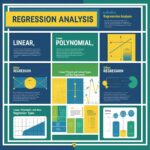
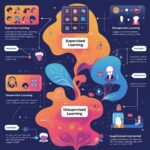
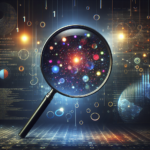
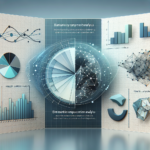



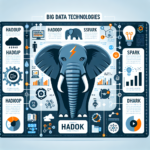



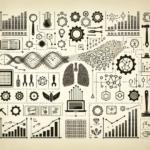
Chose where you want to study, and we will let you know with more updates.